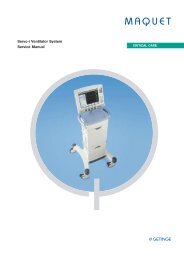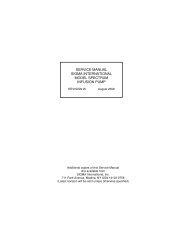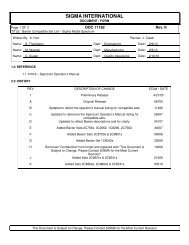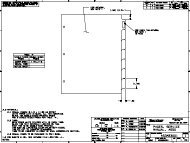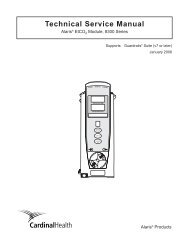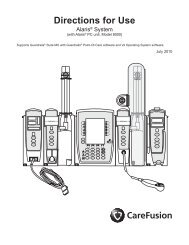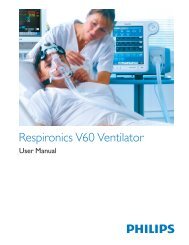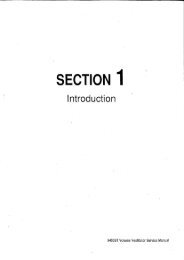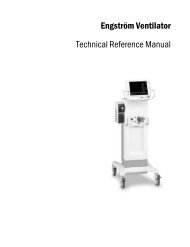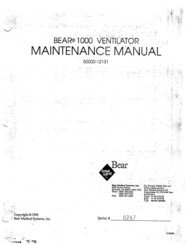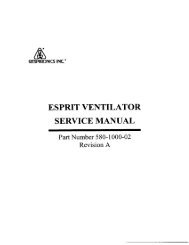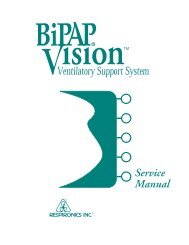Operator's Manual-AVEA - Static Content
Operator's Manual-AVEA - Static Content
Operator's Manual-AVEA - Static Content
Create successful ePaper yourself
Turn your PDF publications into a flip-book with our unique Google optimized e-Paper software.
88 Bear Cub 750PSV<br />
CAUTION<br />
Before using any test equipment (Electronic or Pneumatic) for calibration procedures<br />
(other than Operational Verification), the accuracy of the instruments must be<br />
certified by a testing laboratory. The laboratory master test instruments must be<br />
traceable to the U.S. Bureau of Standards or Equivalent. When variances exist<br />
between indication and actual values, the calibration curves provided for each<br />
instrument by the testing laboratory must be used to establish the actual correct<br />
values. This certification should be performed at least once every six months. More<br />
frequent certification may be required based on usage and environment.<br />
Exterior Inspection<br />
1. Turn off the ventilator and disconnect from AC power and pressurized gas at<br />
the wall sources.<br />
2. Clean the exterior of the unit with water or a solution of 70% Isopropyl Alcohol<br />
solution only. Wipe all surfaces with a soft cloth or disposable wipe moistened<br />
in the cleaning solution.<br />
3. Inspect the exterior surfaces of the ventilator for broken or loose knobs. Check<br />
the display panel for scratches, cracks and alignment of LED indicators.<br />
Check all front and rear panel fittings, circuit breakers and accessories for<br />
security. Check the AC electrical cord and plug for damage. Record the<br />
reading of the hour meter on the maintenance check list.<br />
4. Replace the ambient air intake filters at the rear of the ventilator.<br />
CAUTION<br />
Do not use Methyl Ethyl Ketone (MEK) or Tricloroethylene, as damage to surfaces<br />
will result. Do not allow any liquid to spill or drip into the ventilator.<br />
Interior Inspection<br />
1. Open the Ventilator.<br />
2. Vacuum all surfaces inside the ventilator. Be sure to reach areas around<br />
connectors, circuits boards and pneumatic assemblies.<br />
3. Visually inspect for any overheated components, loose connectors, damaged<br />
wires or tubing, kinked tubing, loose ribbon cables, loose or missing hardware,<br />
signs of water or other residue inside Tygon tubing, loose Tywraps, poor<br />
connector crimps or loose fasteners.<br />
Specifications<br />
Current leakage – 100µA maximum (per UL 544)<br />
Ground resistance – 0.1 ohms at 25.0 A (per UL 544)<br />
L2342 Revision B November 2004




